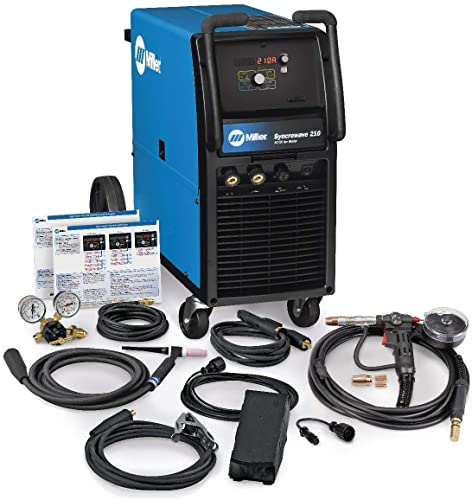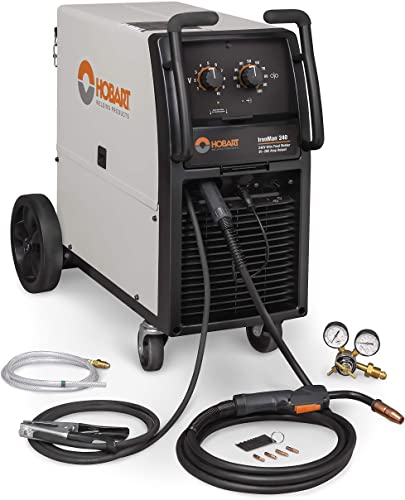The difference between Miller Vs Hobart Tig Welder: Hobart and Miller are two names that consistently rise to the top in the world of TIG welders for perfect welding. The TIG welding process produces high-quality welds with a cleaner bead and is considered one of the most skillful methods of welding. Thinner metals and small welds are better welded with this technique.
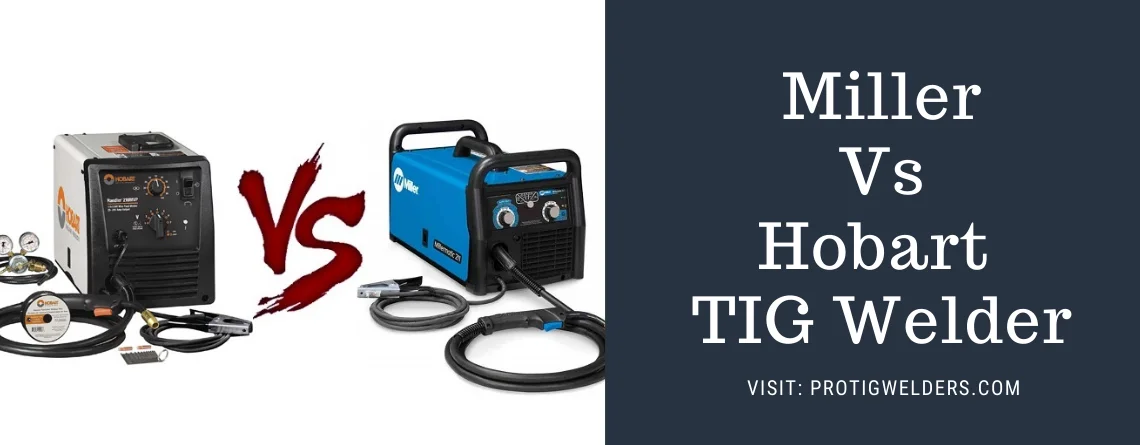
When it comes to choosing the best TIG welder, you consider a number of factors including metal types, thickness, cutting capacity, and last but not least voltage requirements. The list does not stop here, you also compare features, settings, prices, and warranty.
Contents
FAQS
Miller Vs Hobart Tig Welder: Which One is Better?
To have successful welding Miller and Hobart can be your perfect partner. Although they both have some differences regarding welding operation, settings prices, and performances. Hobart welding machines are affordable and easy to use with simple and outclass features.
On the contrary, Miller welding machines are perfectly suitable for heavy welding tasks. They feature more functions to facilitate the welders but are a bit complicated to understand and handle.
Let’s dig out deep in detail.
1. Power Requirements
As far as the voltage and amperes are concerned, different models of Miller have different power requirements. The voltage requirement for different models varies from 115volts to 240 volts. The TIG Welder Diversion is compatible with 120- 240 VAC voltage making it a powerful welding machine. And Maxstar 150 runs efficiently on 115/ 230 VAC.
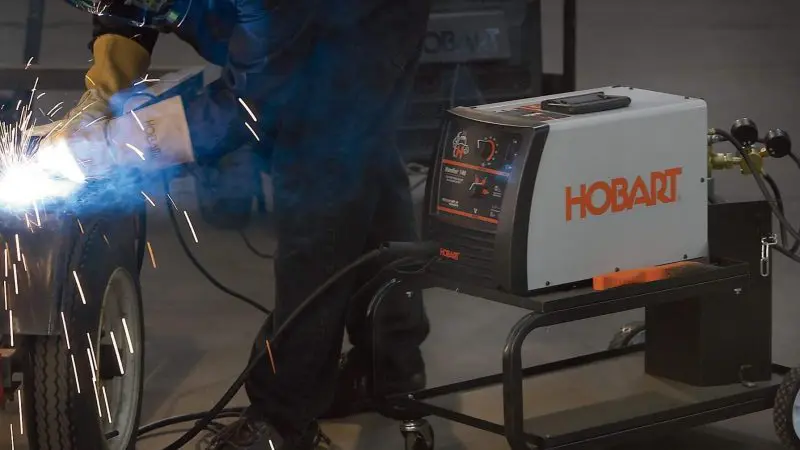
In like manner, Hobart is also versatile and has input voltage ranges from 110/115/120 V – 220/230/240 V making it more user friendly. The Hobart Multi-Handler 200 comes with a multi voltage plug and is easy to use on both 120 or 240 volt input power sources.
2. Metal Thickness And Cutting Capacity
Miller TIG welders are capable of welding mild steel, stainless steel, and aluminum, with thicknesses ranging from 0.20 to 3/ 16 inches.
Similarly, Hobart is flexible to handle various metals and is capable of TIG welds up to 3/ 16 inches. Many of the Hobart models are versatile and work as MIG, TIG, and Stick all in one with a welding capacity of up to 3/ 16 inches.
3. Duty Cycle
A welder will be able to work continuously for a given period of time out of a span of ten minutes and this is known as the duty cycle.
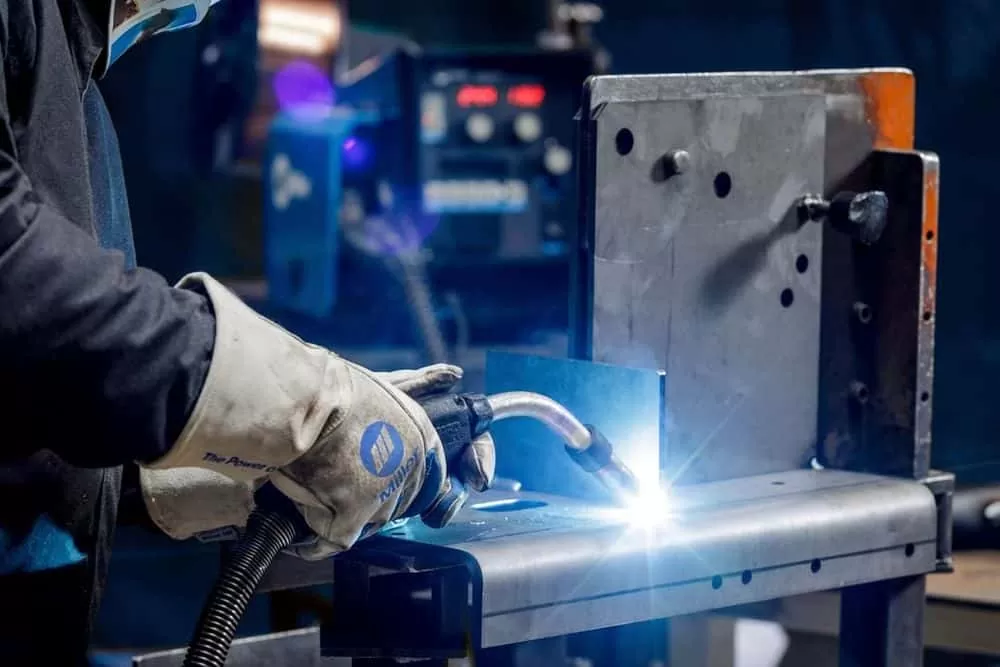
If we talk about the Miller TIG machine’s duty cycle, the Millermatic 211 features a 30-percent duty cycle at a 150-amp output rated at 230V.
The duty cycle of Hobart TIG welders varies in different models. The Hobart EZ TIG 165i offers a 20% duty cycle at 165 amperes. This is sufficient for beginners and hobbyists welders.
The TIG welding machines with more duty cycles give you an excellent experience when it comes to welding projects.
4. Features
Miller welding machines have some amazing features making them popular among welders. To enhance the machine’s performance it is essential to keep it cool. Thanks to the Fan on-demand feature to get this job done perfectly. It has a digital display to monitor the ongoing tasks. Remote amperage foot control makes it easy to use during work.
At the same time, the Hobart TIG welding machines have excellent features to make them the best Tig welder. They offer infinite amperage control and high-frequency start. For overheat protection, they have on-demand fans. Moreover, the inverter-based design with AC and DC output makes them popular among professionals.
5. Weight And Portability
Due to their small size and lightweight packaging, Miller’s TIG welders can equally be taken anywhere they’re needed since they’re extremely compact. Besides being portable, Miller tig welding guns also provide a great deal of versatility since their product range is vast.

Hobart TIG welders are impressively lightweight making them perfect portable TIG welders. One of the models weighs 38.4 pounds. The built-in handles allow you to take the machines easily for welding projects outside the garage.
6. Prices
Among the top brands, Miller is quite expensive, ranging from $1800 to $10,000 and beyond. But you will be satisfied with its performance. Moreover, the company’s products are well-designed and deliver speed, precision, and flexibility.
Talking about the prices of Hobart welding machines, different models come with different price tags. And the price range falls between $600 to $2000 depending on the capacity and features of the models.
7. Warranty
Miller’s Warranty delivers unsurpassed peace of mind with the best coverage in the industry. Additionally, their labor warranty is valid for three years. Original main power rectifiers come with a warranty of 5 years. A three-year parts and labor warranty is available for engine-driven welding, generators, and wire feeders.
Coverage is available for one year on the following items: motor guns, remote controls, TIG torches, water cooling systems, foot, and hand controls, and plasma cutting torches. Moreover, batteries and guns have a 6 month and 90-day parts warranty, respectively.
Surprisingly, Hobart warranty offers are tremendously appreciable. Mian rectifiers, stabilizers, and transformers are backed by five years of warranty. You get 3 years of warranty on the drive system and PC boards. Furthermore, it offers one year warranty on guns including TIG torches.
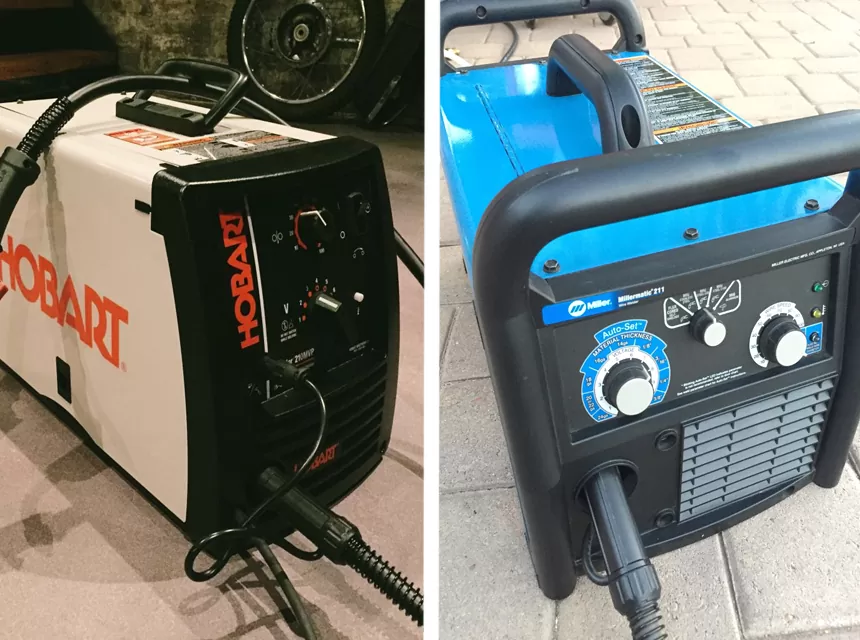
My opinion
Hobart and Miller Welder Company, Inc. (Miller), appealed a judgment in favor of the defendant, John E. Hobart Manufacturing Company (Hobart). Miller had charged Hobart with infringing upon its patents covering gas-shielded arc welding processes using metal electrodes. The Supreme Court held that the process used by Hobart was the same as that described in Miller’s patents.
The Hobart process was an improvement on existing welding techniques since it allowed for speedier welding than any of the prior processes. The Hobart process also overcame the disadvantages of other methods. However, Miller had obtained two patents covering a high-frequency welding technique using either direct or alternating current. Government experts had testified that the high-frequency welding process was a distinct use of electricity and that it produced a different kind of arc. However, both sides agreed that Hobart used a direct current in its process.
The Court held that the patents covered ‘the use of either alternating or direct currents for welding.’ The circuit court had also found that Hobart had infringed on the patents. The Supreme Court reversed the judgment of the circuit court, holding that it ‘was too broad in describing what was covered by Miller’s patents.’
The patent description did not cover every use of direct current for welding, but only ‘the particular process or part of a process described in the specifications for each patent.
Conclusion
After reading this comparison ( Miller vs Hobart Tig welders) in detail, it becomes easy to choose the right welder that fulfills your demand smartly. If you are a contractor or a DIY enthusiast, Hobart will work perfectly in 90% of cases. In terms of performance, any of the Hobart welding machines will not disappoint you.
Conversely, you should grab Miller if you are a professional welder as this welding machine offers serious operations with complicated settings and high prices.
